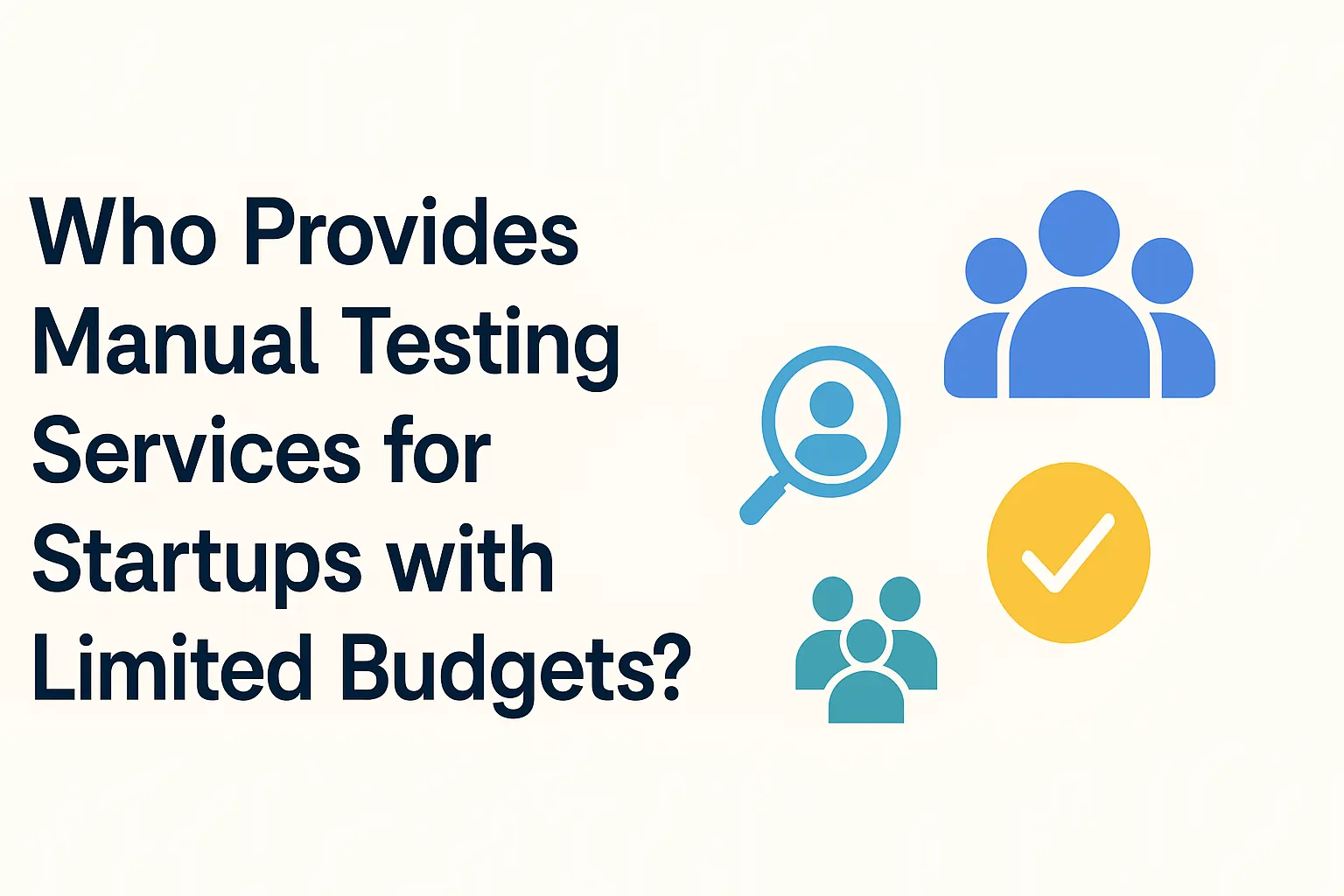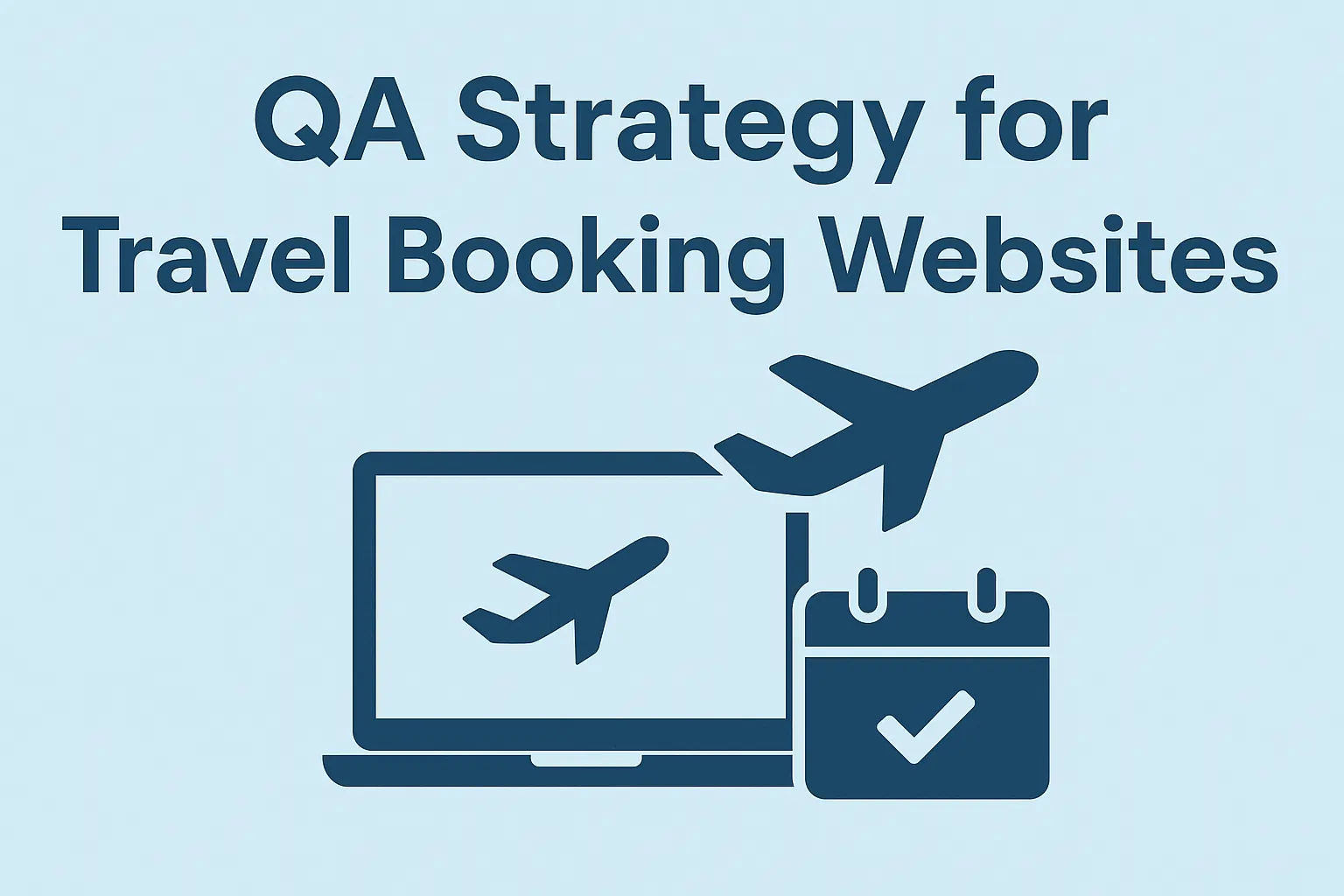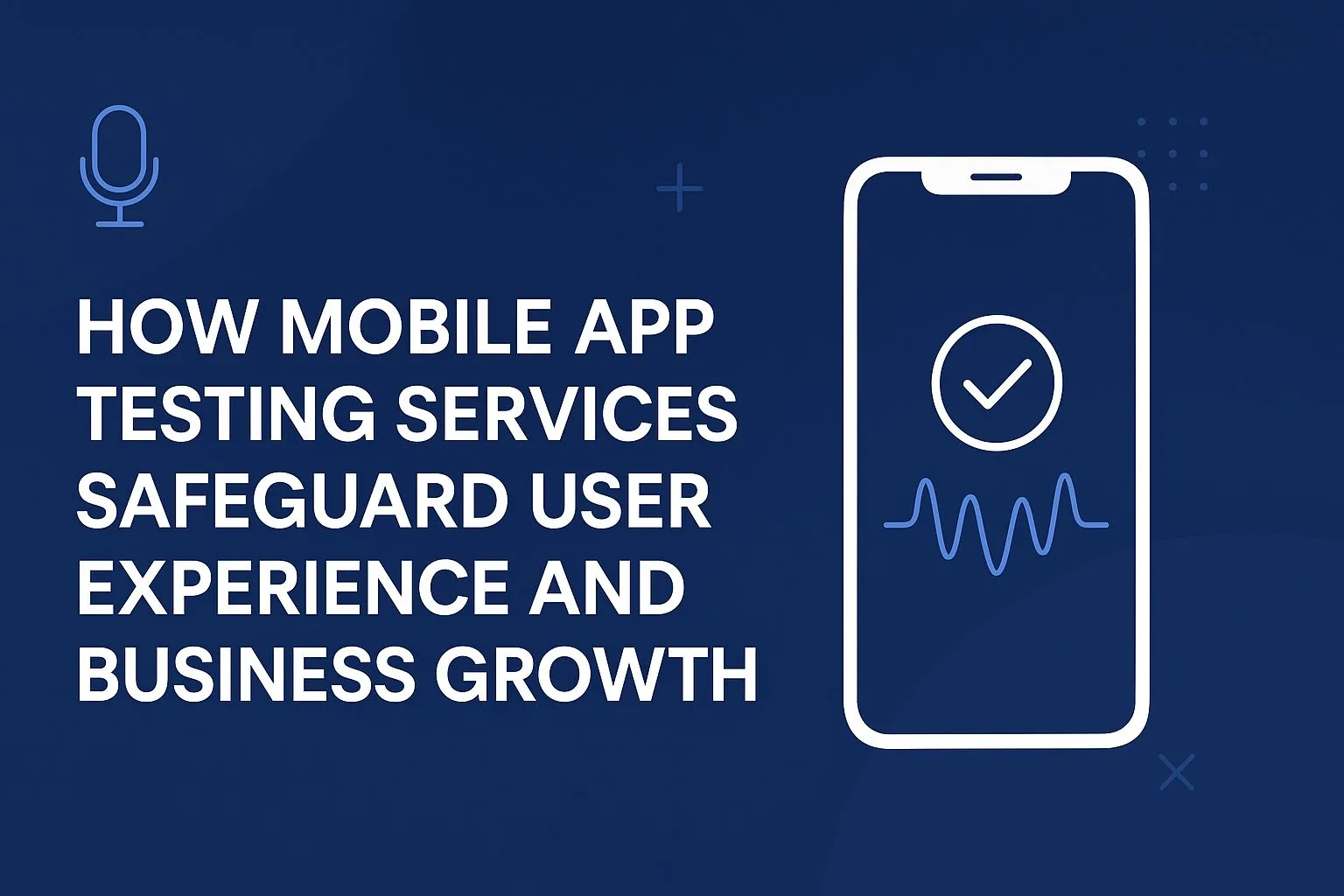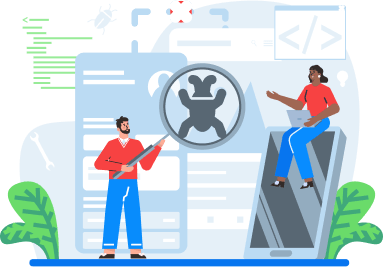Website Testing Services Explained: Tools, Techniques, and Tips
In today’s highly competitive digital landscape, website testing services are crucial for the successful development of any online platform. To ensure a website delivers a smooth experience, it must be fully functional, user-friendly, secure, and optimized for a variety of devices and varying traffic loads. Web testing services play a key role in providing the tools and expertise necessary to verify that websites meet these essential standards. In this blog, we will explore the different categories of website testing, the tools used, and the methods implemented to guarantee websites are performing at their best. Special emphasis will be placed on enhancing user experience testing and maintaining high standards through quality assurance website testing.
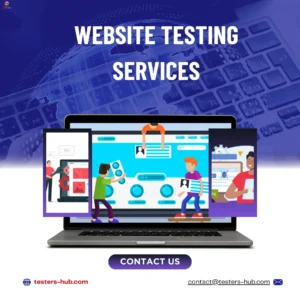
1. What Are Website Testing Services?
Website testing involves assessing a website’s performance and usability to ensure that all its features work seamlessly. A wide variety of web testing services exist, each focusing on a specific aspect of the website—functionality, performance, security, and usability.
1.1 Definition of Website Testing Services
The purpose of website testing services is to confirm that a website operates correctly in a variety of scenarios. These services include online usability testing, which looks at how easy it is for people to navigate and engage with the website, and browser compatibility testing, which makes sure the site functions properly across various browsers. This also includes web app testing services, which evaluate the functionality and security of web apps that are connected to the website.
1.2 Importance of Website Testing in Today’s Digital Era
In an era where competition is fierce, testing web apps and testing website usability have become integral. Poor performance or usability flaws can directly impact user retention and conversion rates. Websites that load slowly, or feature broken links, can drive potential customers away. Hence, comprehensive website testing services are essential to optimize functionality, security, and user experience.
1.3 Categories of Services for Website Testing
The most popular web services for testing are:
- Functional testing: Verifies that all website elements, including buttons, navigation, and forms, are operating as intended.
- Performance testing: It evaluates a website’s ability to manage high data volumes and traffic.
- Usability testing: Makes sure the website is aesthetically pleasing and easy to use by concentrating on the user experience (UX).
- Security testing: Preserves user information by detecting weaknesses that hackers might exploit.
2. Benefits of Using Website Testing Services
Website testing provides businesses with a multitude of benefits, from improved user experience testing to ensuring browser compatibility testing and web QA testing.
2.1 Enhanced Website Performance
Testing for performance involves identifying bottlenecks that affect load times, user interactions, and server stress. Tools like Pingdom and GTMetrix test website performance and help businesses ensure fast page loading times even under heavy traffic. A faster website enhances user experience testing and keeps users engaged, which ultimately helps reduce bounce rates.
2.2 Improved User Experience (UX)
To guarantee that consumers have a flawless experience when engaging with a website, UX testing is essential. Services for web usability testing evaluate how simple it is for users to navigate, locate pertinent information, and carry out specified tasks. Enhancing the site’s organization, content, and flow will increase user satisfaction and promote repeat business.
2.3 Better Security and Data Protection
Vulnerabilities that potentially expose the website to assaults are found via security tests. Customer data loss and reputational harm are possible outcomes of a security breach. QA web application testing on a regular basis guarantees that your website is secure from vulnerabilities. Businesses may safeguard their website and visitors from potential threats by implementing website QA testing services.
3. Tools Used in Website Testing Services
The right testing tools are essential for effective website testing services. These tools enable businesses to perform comprehensive testing across various aspects of their websites.
3.1 Popular Automated Testing Tools
Businesses can save time and guarantee test correctness by using automated technologies like Selenium, Cypress, and TestComplete. Both cross-browser compatibility testing and QA web testing can be done with these tools. Automation expedites the testing procedure and ensures reliable results each and every time.
3.2 Manual Testing Tools for Detailed Analysis
While automated testing tools handle most repetitive tasks, manual testing is required for more detailed analysis of a website’s user experience testing and usability. Platforms like UserTesting allow real users to interact with the website, providing insights that automated tests might miss.
3.3 How to Choose the Right Testing Tool for Your Needs
The intricacy of your website and its testing requirements will determine which testing tool is best for you. Web usability testing and test site tools could be adequate for basic websites. To achieve thorough testing, larger, more complicated websites can need web app testing services in addition to a mix of automated and manual testing techniques.
4. Techniques Employed in Website Testing Services
Website testing services employ various techniques to test the different aspects of a website, such as web application testing services, QA testing, and user experience testing.
4.1 Functional Testing Methods
Functional testing confirms that a website’s key components operate as intended. This covers testing interactive components, login systems, and forms. These tests may be automated with tools like TestComplete and Selenium, guaranteeing that every component of the website functions as intended.
4.2 Non-Functional Testing Explained
Non-functional tests assess performance, security, and usability. Cross browser compatibility testing ensures the site works across multiple browsers. Web usability testing checks that the website provides an easy-to-use interface for users. Non-functional testing also includes security assessments to ensure that sensitive data is protected.
4.3 Agile Testing Techniques for Faster Results
Agile testing integrates testing into the development cycle early on. Agile techniques focus on quick feedback loops and continuous improvement. QA web application testing is commonly used in agile projects to catch issues early, reduce costs, and speed up time to market.
5. Types of Website Testing Services
There are several types of website testing services, each catering to different aspects of website performance and usability.
5.1 Functional Testing Services
Functional testing ensures that a website’s core features are functioning correctly. This can include testing sign-up forms, product search features, and other important website features. Using automated testing tools helps streamline these tests, ensuring comprehensive coverage.
5.2 Usability Testing Services
Usability testing sites evaluate how easy and intuitive a website is for users to interact with. Testers use different devices and browsers to simulate user interactions. Website usability testing services focus on evaluating navigation paths, button visibility, and content clarity.
5.3 Security Testing Services
To find and fix vulnerabilities in your website, security testing is crucial. Vulnerability scans and penetration testing are common testing methods. Using the services of a web application testing business guarantees that your website complies with the most recent encryption and security guidelines.
5.4 Compatibility Testing for Multi-Device Support
It’s crucial to make sure a website is responsive and works on all devices. While web app testing services make sure the app is mobile-friendly, cross-browser compatibility testing verifies that the website works as intended across various browsers.
6. How to Choose a Website Testing Service Provider
Choosing the right website testing company is critical for ensuring a high-quality product. Here are some tips to help you select the right provider:
6.1 Key Qualities to Look for in a Service Provider
Seek out a supplier who has demonstrated expertise in both website testing and QA web testing. In order to demonstrate that they comprehend the significance of user experience and functioning in contemporary websites, the provider should also have a solid track record in web usability testing.
6.2 Comparing In-House vs. Outsourced Testing Services
Although they can be more expensive and time-consuming, in-house teams give you greater control. You can benefit from specialist knowledge in QA testing web apps and website usability testing without incurring additional costs by outsourcing to a web testing service provider.
6.3 Questions to Ask Before Hiring
Ask the following questions before hiring a testing service:
- What types of testing do you specialize in (e.g., web app testing services, QA testing sites, security testing)?
- Can you provide case studies or references from businesses with similar needs?
- How do you report and track issues during the testing process?
- What is your approach to cross-browser compatibility testing and mobile testing?
7. Common Challenges in Website Testing Services
Website testing services come with their own set of challenges. Some of the common obstacles businesses face include:
7.1 Handling Complex User Interfaces
Websites with complicated interfaces or numerous interactive elements present challenges during user experience testing. Ensuring that all features work smoothly and are intuitive requires comprehensive manual and automated testing.
7.2 Testing for Cross-Browser Compatibility
Making sure a website functions properly in a variety of browsers is a constant problem. To make sure that every piece renders and works properly across platforms, cross-browser compatibility testing necessitates thorough testing and validation, even with the greatest technologies.
7.3 Ensuring Comprehensive Security Testing
With security threats evolving, QA web application testing must be updated continuously to address new vulnerabilities. This can be especially challenging for websites that store sensitive information or offer financial transactions.
8. Tips for Effective Website Testing
Here are some tips to make the most out of website testing services:
8.1 Create a Well-Defined Testing Plan
Having a detailed testing plan is essential to avoid overlooking critical aspects of web testing services. It ensures that testing is systematic and comprehensive.
8.2 Prioritize Key Features for Testing
Focus on the most important aspects first—critical business functions like payment gateways, contact forms, and user login processes must work flawlessly. Usability testing service for websites helps improve customer interaction with these essential features.
8.3 Use Real-World Scenarios for Testing
Testing should mimic real-world usage as closely as possible. This includes simulating high traffic during web app testing services and testing users from various demographics.
Conclusion
Website testing services are essential for guaranteeing that your website functions properly, is safe, and provides a great user experience. Whether you are concentrating on web application testing, browser compatibility testing, or user experience testing, comprehensive and efficient testing is necessary to give your users an ideal surfing experience. You may find problems with your website before they affect your visitors and the reputation of your business by working with a competent website testing company. Our specialty at Testers HUB is providing thorough website testing services that are customized to your unique requirements. Our team of professionals makes sure that every part of your website is optimized for optimal performance, from cross-browser compatibility testing to QA web testing and online usability testing services.


